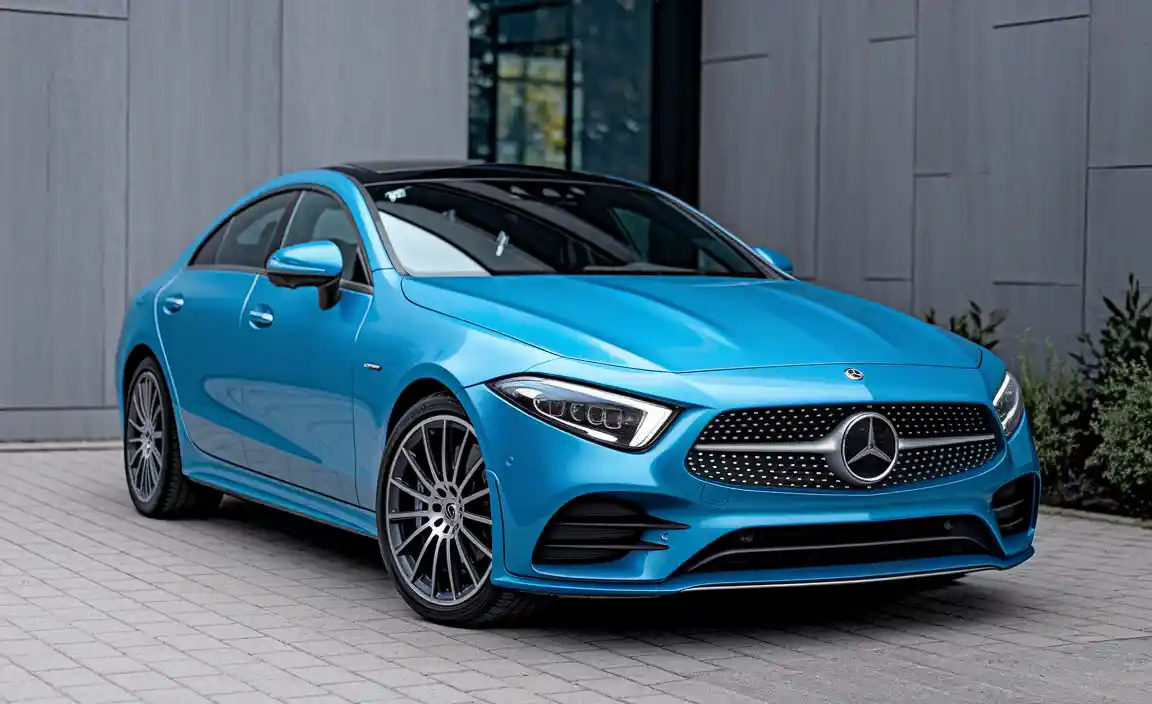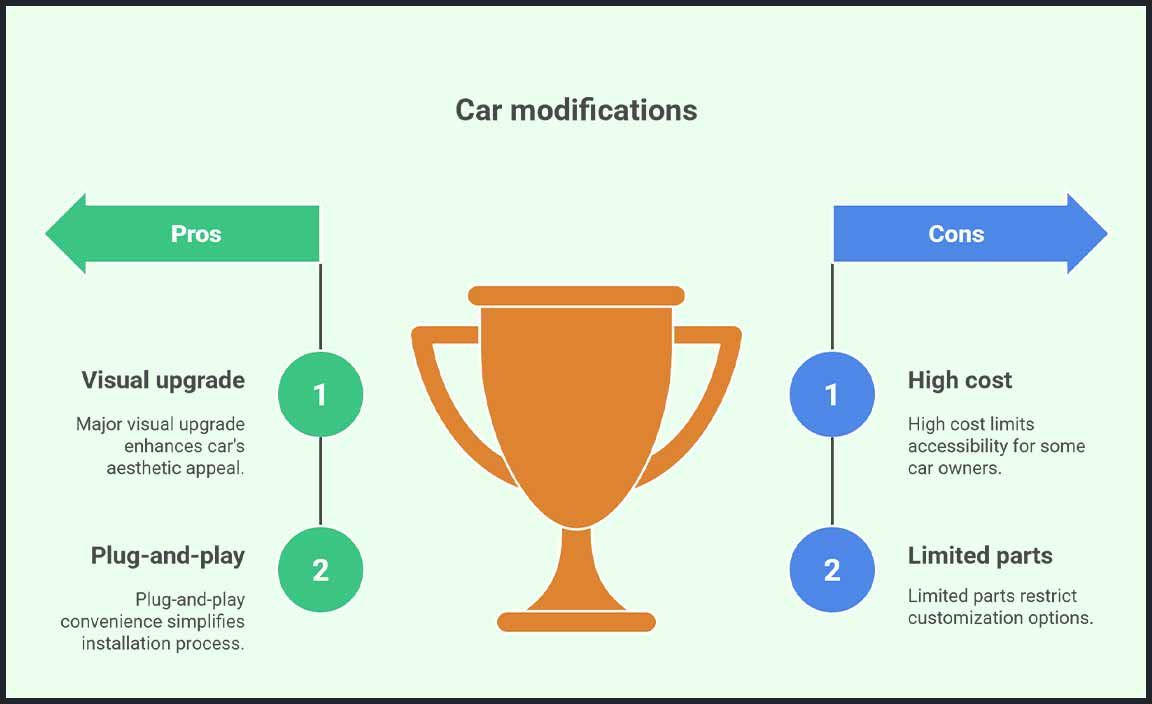Ever scrolled through car forums or YouTube videos and spotted a Mercedes CLS with an interior that just looks different—like it belongs in a concept car? That’s probably not a coincidence. Many CLS owners are now diving into the world of carbon fiber dipping, transforming their cabins from factory-fitted to fantastically futuristic. Let’s be honest—driving a Mercedes-Benz CLS is already an experience.
But adding that extra layer of style, especially inside, takes things to a whole new level. In this guide, I’m going to take you on a journey through one of the most intriguing trends among Benz enthusiasts: the dipped Mercedes CLS interior. We’ll talk about the models, the process, the perks, and everything in between—no jargon, just car talk.

Overview Of The Mercedes-Benz W219 And C219 Models
When we talk about the Mercedes CLS being dipped, we’re mostly referring to two iconic model codes: the W219 and C219. These first-generation CLS-Class vehicles hit the scene with a mission—to blend the comfort of a luxury sedan with the silhouette of a coupe.

And they nailed it. Released in the mid-2000s, the CLS brought something distinctive. It wasn’t trying to be an S-Class or an E-Class. It had a distinctive look, a lower-slung roofline, and frameless doors that turned heads.
The dipped beam headlights and aggressive front headlight assembly further gave it a futuristic edge. But where most people stop at admiring the exterior, real enthusiasts take the conversation inside—with a carbon fiber twist.
Importance Of Interior Trim Customization
Let’s be real. The centre console, air vents, door trims, and even airbag surrounds inside a factory CLS are nice, but they’re… standard. And if you’re the kind of driver who sees their car as an extension of their personality, “standard” just won’t cut it.
Interior customization, especially dipping, is about more than just looks. It adds emotional value. It shows care. It’s like saying, “This is my CLS—not just a CLS.” Whether you’re fixing a problem in a scratched-up trim or just want your vehicle to stand out, carbon fiber dipping is a solid step forward.
Carbon Fiber Dipping: What And Why?
So, what exactly is carbon fiber dipping?
In short, it’s a process where a hydrographic film with a carbon fiber pattern is applied to interior parts like trim pieces, fittings, or the centre console. The parts are cleaned, primed, dipped in a water tank containing the film, and then clear-coated for protection.

It’s not real carbon fiber, but the upper layer mimics the weave so well that most people can’t tell the difference. Plus, it’s far more affordable and versatile.
Why People Love It:
-
It offers a significantly enhanced view inside the cabin.
-
You can dip nearly any part, from control units to seat backs.
-
It’s durable, affordable, and transforms the entire vibe of your interior.
Understanding Carbon Fiber Dipping
Think of it like wrapping but in liquid form. Each item is dipped carefully using water transfer printing. Afterward, a protective clear coat ensures it withstands sun, humidity, and day-to-day wear.
You can customize finishes—go for gloss, matte, or even colored fiber patterns. Want a red carbon weave for the doors and black for the air vents? Totally doable.
Benefits Of Carbon Fiber Interior Trim
Aside from the obvious—style—carbon fiber dipped interiors come with a whole list of perks:
-
Customization: You choose how deep you go—just the centre console or the whole dashboard.
-
Cost-Effective: Compared to replacing parts, dipping is a fraction of the price.
-
Durability: When done right, dipped interiors can last years without fading or peeling.
-
Functionality: The process doesn’t interfere with your car’s control units, buttons, or airbag systems.
Focus Models: CLS550 And CLS63 AMG
Now, if we zoom into two stars of the CLS lineup—the CLS550 and the monstrous CLS63 AMG—we see where carbon fiber dipping truly shines. Both models offer serious torque, power, and presence. But inside?

That’s where the owner can make their mark. The CLS63 AMG, in particular, often gets fully dipped—centre console, dashboard, steering trim, even fuses and button housings. It’s all about elevating the feel.
Key Features And Specifications
Let’s briefly touch on what makes these cars so special:
CLS550:
-
V8 engine with smooth torque delivery.
-
Elegant appointments but with room to improve inside.
-
A perfect canvas for interior upgrades.
CLS63 AMG:
-
Hand-built AMG engine.
-
Thundering power matched by aggressive styling.
-
A favorite for enthusiasts looking to go all-in on visual and performance mods.
Popular Modifications And Enhancements
Beyond dipping, many owners also:
-
Replace bulbs with LED for a sharper dipped beam.
-
Upgrade the control unit for ambient lighting.
-
Install upgraded headlight assemblies.
-
Change out parts like air vents, shift knobs, and even seat adjustment dials.
One trend is integrating electric era touches—like ambient RGB lighting, wireless phone charging pads, and touchscreen retrofits. The dipped trim complements these modern upgrades perfectly.
Customer Insights And Interests
From forums to YouTube comment sections, it’s clear—owners LOVE the transformation.
Many report that dipped interiors bring their cars back to life. It’s the lowest level of investment for the highest level of visual impact. One owner said, “It felt like I ordered a brand-new CLS. The finish made every drive feel like day one again.”
“People Who Viewed This Item Also Viewed” Section Analysis
When browsing dipped parts or interior kits, these often pop up in the “also viewed” sections:
-
Audi A7 carbon dipped dash trims
-
BMW F10 iDrive bezels
-
Aftermarket control units with carbon overlays
-
Carbon-look air vents, seat parts, and shift surrounds
This shows a wider trend: people across luxury brands are personalizing their interiors for that distinctive look.
Trends In Mercedes Enthusiast Modifications

Customization isn’t slowing down. The CLS community is:
-
Combining dipping with custom leather wrapping.
-
Painting parts before dipping for wild finishes.
-
Swapping in updated parts from newer models for a hybrid build.
And dipping? It’s right at the center of this trend. It’s accessible, flexible, and just looks cool.
Exploring Remanufactured Options
Some prefer remanufactured dipped parts instead of dipping their originals. These parts are cleaned, dipped, and resold—sometimes with a warranty.
For buyers who want plug-and-play, this is a solid option.
Advantages Of Remanufactured Parts
-
Cost-effective: Often cheaper than new parts.
-
Quality: Many companies ensure parts meet OEM spec.
-
Availability: Popular appointment trims can be shipped in days.
-
Care: Already coated and protected, so you avoid DIY risk.
Cost-Effectiveness And Performance

Let’s break it down:
| Modification | Cost Estimate | Value Added |
|---|---|---|
| Full interior dip | $400–$800 | Major visual upgrade |
| Reman dipped parts | $200–$500 | Plug-and-play convenience |
| Real carbon fiber | $2000+ | Expensive, limited to some parts |
For most people, dipping hits that sweet spot between performance, quality, and affordability.
Technical Challenges And Solutions
Of course, there can be hiccups. Some face:
-
Misalignment during dipping.
-
Peeling due to low-quality clear coats.
-
Fading from UV exposure.
Tips:
-
Choose a reputable company with a solid portfolio.
-
Always confirm part number compatibility.
-
Let parts cure properly—don’t rush installation.
-
Ask about clear coat type—it makes all the difference.
Common Server Connectivity Issues
If you’re ordering parts online and can’t access product pages or order forms due to server connectivity issues, don’t panic.
Quick Fixes:
-
Try switching devices or browsers.
-
Clear your cache.
-
Contact seller support for offline ordering options.
Some vendors even allow you to place your order via email or phone.
Troubleshooting And Support Options
If a malfunction occurs post-installation:
-
Check fuses and connections—some trims hide sensors.
-
Reinstall parts if misaligned.
-
Contact the seller about warranty or support.
Reliable sellers will always guide you through troubleshooting.
Seller Credibility And Transaction Process

Before you place that second-guess order, do some digging.
Look for:
-
Verified seller feedback
-
Clear product descriptions with short description
-
Return policy and warranty
-
Photos showing finish and fitment
And most importantly—transparent communication about conditions.
Evaluating Seller Feedback
Don’t just glance at stars. Dive into:
-
Comments about functionality.
-
Mentions of fit and finish.
-
Issues resolved or ignored.
-
Real photos from buyers.
A five-star review that says “Perfect connection, flawless finish, fast shipping” is gold.
Trustworthiness In Online Transactions
To keep it safe:
-
Use platforms with buyer protection.
-
Avoid vague listings or those lacking item numbers.
-
Ask questions—if the seller avoids your question, that’s a red flag.
Remember, your CLS deserves the best—not the sketchiest deal on the web.
Conclusion
So, there you have it—Mercedes CLS dipped, decoded.
From understanding the technology to picking the right parts, exploring customizations, and making smart appointments with remanufactured options, you’re now equipped to dip your CLS like a pro. Whether you’re cruising in a C219, pushing torque in a CLS63 AMG, or just itching to refresh that centre console, dipping offers a bold, beautiful transformation.
It’s not just about changing how your car looks—it’s about how you feel every time you step in. And that, my friend, is worth every drop of carbon fiber cool.
Frequently Asked Questions
1: What Does “Mercedes CLS Dipped” Mean?
It refers to applying a carbon fiber-style film to interior trim parts of the Mercedes-Benz CLS using hydrographic dipping. It gives the car a distinctive look without replacing parts.
2: Is Carbon Fiber Dipping Permanent?
No, but it’s durable. A clear coat protects it, and with proper care, it can last several years. It can also be removed or re-dipped if needed.
3: Which Parts Of The CLS Can Be Dipped?
Almost any hard plastic surface—centre console, air vents, control units, door trims, even parts near the seat and airbag housings.
4: Can I Dip The Interior Myself?
Technically, yes. DIY kits exist, but for the best result and warranty-backed quality, professional services are recommended.
5: What’s The Difference Between Dipped And Real Carbon Fiber?
Dipped parts use printed film for visual effect; real carbon fiber is structural and expensive. Dipping offers the look without the cost.
6: Are There Risks Involved In Dipping My CLS Interior?
Risks include peeling, bubbling, or poor fitment if done unprofessionally. Always check seller/company feedback and product conditions.
7: Does Dipping Affect Airbags Or Electronics?
If done correctly, no. The dipped layer only covers the surface and doesn’t interfere with sensors, control units, or airbag function.
8: Can I Buy Pre-Dipped Remanufactured Parts?
Absolutely. Many companies offer remanufactured and pre-dipped interior parts for the Mercedes-Benz CLS with warranty options.
9: How Much Does It Cost To Dip A CLS Interior?
Expect to spend between $400 and $800 for a full interior dip. Remanufactured dipped parts can cost less depending on availability.
10: What Makes Dipping A Good Choice For CLS Owners?
It’s affordable, stylish, and allows personalization without compromising performance or factory functionality.